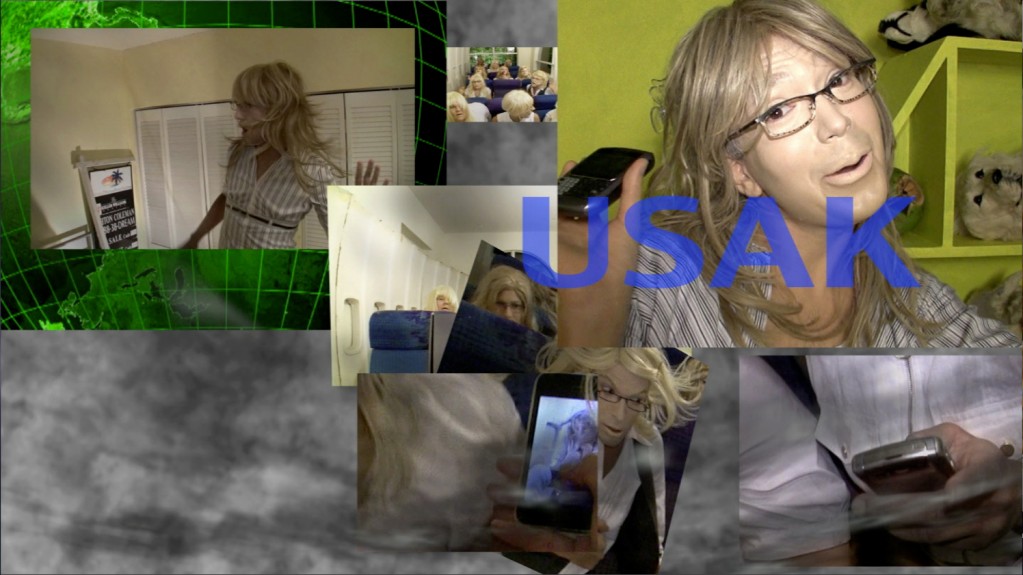
Ryan Trecartin, "K-Corea INC. K (Section A)," 2009. HD Video, 31 minutes, 20 seconds. Courtesy the artist and Elizabeth Dee, New York.
In September of last year, Kelly Klaasmeyer, the Houston art critic and Glasstire.com editor, made a pretty deft observation. Writing for the Houston Press, she noted that, “Internet content is the ‘found object’ of the 21st century.” And rightly so. While the web will almost certainly be used as a medium for decades to come, its cultural influence may inevitably become more visible and more pervasive than invoking the Internet itself. What kind of work can we expect to see from generations of young artists breastfed on social networking sites, webisodes, pornography, and video blogging?
Artists like Ryan Trecartin and Ivan Lozano might have the answer. The chaotic and gender-bending characters in Trecartin’s films use a unique vernacular of hyperglobalization consumer-speak, and his work—often jarring and non-linear—effectively captures the extent to which the web has become embedded in our lives. His videos are a complete mind-fuck and just as disturbing to watch as they are captivating.
– Watch more Videos at Vodpod.
Artists like Ivan Lozano are using the web not as inspiration, but as source material. His 2007 video, 21st Century Machines: A Technodrama for Future Generations, uses found footage from peer-to-peer (P2P) networks to depict a star-crossed gay cyborg love affair soured by technological incompatibility. Works like these are precisely what Klaasmeyer is describing, and they point to a seemingly immeasurable landscape of artistic possibilities.
21st CENTURY MACHINES: A TECHNODRAMA FOR FUTURE GENERATIONS from Ivan Lozano on Vimeo.
Applications such as this, where sourced Internet materials can be as much a medium as a tube of paint, make for a serious dialogue about the post-medium climate of today’s contemporary art practices. Similarly, new painting methods from emerging artists seem more prevalent than ever before (especially if we’re taking cues from this year’s heavily painterly Whitney Biennial) and much of those practices are bred from conceptual applications. Contemporary painting currently finds itself in a very interesting place, where the idea behind the work is as valuable as the work itself (a concept that will only continue to gain momentum in the current climate), and where representation and abstraction each find themselves more assertive and purposeful than ever before. Over guest blogging for the next couple of weeks, I look forward to addressing some of these issues and exploring my interests as a curator.